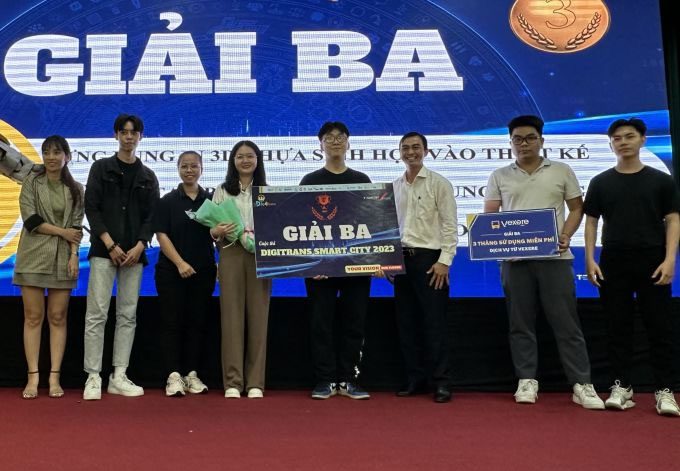A group of students in Ho Chi Minh City has developed a robotic hand to help stroke patients regain hand function, alleviating their daily challenges.
The product, created by seven students from the Ho Chi Minh City University of Industry, recently won third place in the Smart City Initiative Competition (DigiTrans Smart City) held in November. The robotic hand assists stroke patients and individuals with nerve or musculoskeletal issues in enhancing their hand mobility.
According to Tran Binh Nguyen, the group’s technology lead, existing rehabilitation devices on the market mainly focus on training the hand’s gripping capabilities, with few products emphasizing the training of individual fingers and joints.
After researching the market, the group found that similar products typically cost between 4 to 20 million VND, depending on their type. To provide an affordable option with diverse training capabilities, they designed an exoskeleton actuator that mimics human hand movements, functioning automatically at a price range of 600,000 to 2 million VND, enabling patients to practice at home.
The hand frame is made from biodegradable PLA plastic and is designed to match the size and movement angles of an adult’s hand. The main function of the finger joints is to create an appropriate angle corresponding to the target points during training, ensuring that the fingers do not become misaligned or tilted during exercises.
When the robotic hand operates, cranks transmit motion to a connecting rod that pushes the mechanism forward, indirectly rotating the finger joints to create finger movement. Servo motors are integrated into the exoskeleton to synchronize the movements of the fingers, making gripping and stretching exercises easier.
To design the product, the group consulted real patients to calculate the necessary forces. They also sought advice from hand surgeons and rehabilitation specialists to develop treatment protocols tailored to different conditions. This approach ensures the product is programmed with precise training modes for patients.
When in use, the user wears the device on their hand, using elastic fabric straps to secure the fingertips. The device includes a control panel with buttons for different training functions. Users can set specific modes according to their treatment protocols, such as flexion and extension, gripping, and individual finger exercises, facilitating ease of use for patients.
To evaluate its application, the group tested the device on patients at a hospital in Binh Duong. Patients using the robotic hand for flexion and extension reported improved feedback from their hands to their brains. With a training frequency of twice a day for one hour, after one month of treatment, patients were able to lightly move their fingers, achieving a recovery rate of about 30%. In the following month, patients increased their training frequency to four times a day with a faster intensity, resulting in a recovery rate of 60-70%. By the third month, patients could grasp objects weighing 100 grams and independently hold a drinking glass.

Patients can hold a glass and drink water after using the group’s device. (Photo: NVCC)
Binh Nguyen noted that the product’s limitation lies in the mechanical design of the actuator, which is still bulky and may pose challenges during use. Additionally, the control system requires operation via a computer, and there is currently no mobile app for easier control.
In the future, the group plans to develop a more compact product that not only targets hand rehabilitation but also addresses mobility in other body parts. This will help doctors gather important data to formulate treatment protocols that facilitate faster recovery for patients.

Team members receiving third place at the Smart City Initiative Competition organized by the High-Tech Business Incubator, Ho Chi Minh City High-Tech Park in November. (Photo: SHTP-IC).
Mr. Quach Anh Sen, Deputy Director of the High-Tech Business Incubator at Ho Chi Minh City High-Tech Park, remarked that the group’s product demonstrates significant technological investment and high application potential aimed at stroke patients, which have been on the rise in recent years. However, for a product to enter the market, it requires a process of technology optimization and large-scale patient testing to evaluate its effectiveness.
Mr. Sen stated that the incubator will consider integrating projects into the incubation program to support resources for the product’s continued technological refinement and market access in the near future.


















































